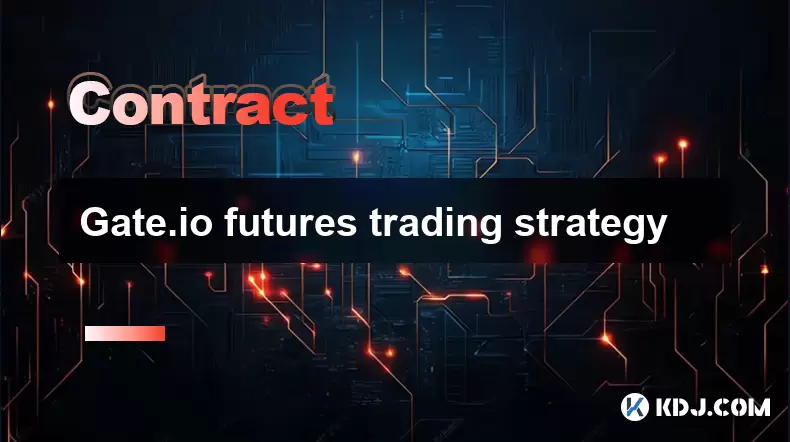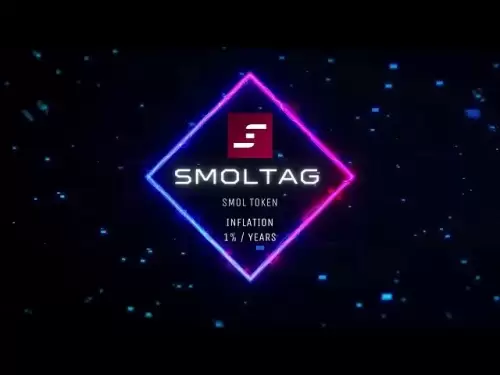-
 Bitcoin
Bitcoin $119300
1.07% -
 Ethereum
Ethereum $3730
3.87% -
 XRP
XRP $3.235
0.29% -
 Tether USDt
Tether USDt $1.000
0.00% -
 BNB
BNB $783.5
1.88% -
 Solana
Solana $188.7
0.25% -
 USDC
USDC $0.0000
-0.01% -
 Dogecoin
Dogecoin $0.2399
-0.44% -
 TRON
TRON $0.3157
2.37% -
 Cardano
Cardano $0.8254
1.94% -
 Hyperliquid
Hyperliquid $42.83
0.14% -
 Stellar
Stellar $0.4372
3.21% -
 Sui
Sui $3.859
4.91% -
 Chainlink
Chainlink $18.53
3.53% -
 Hedera
Hedera $0.2464
0.01% -
 Bitcoin Cash
Bitcoin Cash $519.8
2.46% -
 Avalanche
Avalanche $24.24
2.17% -
 Litecoin
Litecoin $113.7
0.73% -
 UNUS SED LEO
UNUS SED LEO $8.990
0.30% -
 Shiba Inu
Shiba Inu $0.00001390
0.21% -
 Toncoin
Toncoin $3.188
1.49% -
 Ethena USDe
Ethena USDe $1.001
0.02% -
 Polkadot
Polkadot $4.090
-0.91% -
 Uniswap
Uniswap $10.40
4.08% -
 Monero
Monero $326.6
3.12% -
 Bitget Token
Bitget Token $4.627
-0.42% -
 Pepe
Pepe $0.00001281
0.76% -
 Dai
Dai $1.000
0.01% -
 Aave
Aave $291.6
0.98% -
 Cronos
Cronos $0.1269
7.26%
Gate.io futures trading strategy
Gate.io futures let traders speculate on crypto prices with up to 100x leverage, using strategies like trend-following with moving averages and strict risk management to control losses.
Jul 23, 2025 at 05:35 pm

Understanding Gate.io Futures Contracts
Gate.io offers futures contracts that allow traders to speculate on the future price of cryptocurrencies like BTC, ETH, and altcoins without owning the underlying asset. These contracts are standardized agreements to buy or sell an asset at a predetermined price and date. Traders use them for hedging risk or leveraged speculation. Leverage options on Gate.io range from 1x to 100x, enabling amplified gains—or losses. It's essential to understand the difference between perpetual contracts (no expiry) and delivery contracts (fixed expiry), as each serves different strategic purposes.
Setting Up Your Gate.io Futures Account
Before deploying any strategy, ensure your futures account is properly configured:
- Navigate to the Gate.io website and log in.
- Click on “Futures” from the top menu.
- Accept the risk disclosure agreement.
- Deposit funds into your futures wallet via the “Transfer” button (choose between USDT-margined or coin-margined).
- Select your preferred leverage level using the slider—start with 5x or 10x if you’re new.
- Enable cross-margin or isolated margin depending on your risk tolerance. Cross-margin uses your entire balance as collateral; isolated margin limits risk to a specific position.
Choosing a Strategy: Trend Following
A popular and effective method on Gate.io is trend-following. This strategy involves identifying the market direction using technical indicators: - Apply the 50-period and 200-period moving averages (MA) on the 4-hour or daily chart.
- When the 50 MA crosses above the 200 MA (Golden Cross), consider entering a long position.
- When the 50 MA crosses below the 200 MA (Death Cross), consider a short position.
- Use volume indicators like OBV (On-Balance Volume) to confirm trend strength.
- Place a stop-loss just below the recent swing low (for longs) or above the recent swing high (for shorts).
Implementing Risk Management Rules
Risk control is non-negotiable in futures trading: - Never risk more than 1–2% of your total futures balance per trade.
- Set a take-profit level based on a 2:1 or 3:1 risk-reward ratio—for example, if your stop-loss is 5%, aim for 10–15% profit.
- Use trailing stops to lock in profits as the market moves in your favor.
- Avoid over-leveraging—even with 100x available, stick to 5x–20x unless you’re an experienced scalper.
- Monitor open positions constantly using the “Positions” tab in Gate.io’s futures interface.
Using Gate.io’s Built-in Tools for Execution
Gate.io provides advanced tools to execute strategies efficiently: - The charting interface supports TradingView indicators—add RSI, MACD, Bollinger Bands, and Fibonacci retracements.
- Use conditional orders like “Take Profit / Stop Loss” when opening a position to automate exits.
- For scalping, enable time-weighted average price (TWAP) or volume-weighted average price (VWAP) to minimize slippage.
- Check the funding rate tab for perpetual contracts—it tells you whether longs or shorts are paying the other side. Avoid entering longs when funding is highly positive (over 0.1% per 8 hours).
- Always verify the liquidation price shown in your position panel—it must be far from your entry to avoid margin calls.
Backtesting and Journaling Your Strategy
Before live trading, simulate your strategy using historical data: - Export candlestick data from Gate.io or use third-party tools like TradingView’s replay mode.
- Test your entry/exit rules across multiple market cycles (bull, bear, sideways).
- Record every trade in a journal with screenshots, rationale, and outcome—this builds discipline.
- Adjust parameters (e.g., MA periods, leverage, stop-loss distance) based on backtest results.
- Gate.io does not offer native backtesting, so use external tools like Python with ccxt library or platforms like FuturesBacktest.com to model your strategy.
Frequently Asked Questions
Q: Can I trade Gate.io futures without KYC?
No. Gate.io requires identity verification (KYC) to enable futures trading. This includes submitting a government-issued ID and a selfie. Without KYC, you can only trade spot markets.Q: What happens if my position gets liquidated?
If your margin falls below the maintenance level, Gate.io will automatically close your position at the prevailing market price. You lose the entire margin allocated to that trade. The system uses an auto-deleveraging mechanism in extreme cases, which may affect other traders’ positions.Q: How do I switch between isolated and cross-margin modes?
In the futures trading interface, locate the margin mode toggle near your position details. Click it to switch. Note: switching resets your leverage setting—you must reselect it manually.Q: Is there a minimum deposit for Gate.io futures?
There’s no minimum deposit, but you must have enough to meet the initial margin requirement for your chosen contract. For example, a BTC/USDT perpetual contract with 10x leverage and 0.001 BTC position requires at least $30–$50 depending on BTC’s price.
Disclaimer:info@kdj.com
The information provided is not trading advice. kdj.com does not assume any responsibility for any investments made based on the information provided in this article. Cryptocurrencies are highly volatile and it is highly recommended that you invest with caution after thorough research!
If you believe that the content used on this website infringes your copyright, please contact us immediately (info@kdj.com) and we will delete it promptly.
- WazirX, Revote, and Crypto Unlock: A New York Minute on the Latest Developments
- 2025-07-25 06:50:11
- Satoshi-Era Bitcoin Whale Awakens: $469 Million in BTC on the Move
- 2025-07-25 06:30:11
- TIA Tokens, Crypto Shift & Ripple Effect: What's the Deal?
- 2025-07-25 07:10:11
- Bored Ape Trademark Tussle: Appeals Court Throws a Wrench in Yuga Labs' Victory
- 2025-07-25 06:30:11
- SAHARA Token Under Bearish Pressure: $4.72B Volume Signals Caution
- 2025-07-25 05:30:11
- Dogecoin, Meme Coins, and 2025: What's the Hype?
- 2025-07-25 05:10:11
Related knowledge

Why is my Bitstamp futures position being liquidated?
Jul 23,2025 at 11:08am
Understanding Futures Liquidation on BitstampFutures trading on Bitstamp involves borrowing funds to open leveraged positions, which amplifies both po...

Does Bitstamp offer inverse contracts?
Jul 23,2025 at 01:28pm
Understanding Inverse Contracts in Cryptocurrency TradingIn the realm of cryptocurrency derivatives, inverse contracts are a specific type of futures ...

How to find your Bitstamp futures trade history?
Jul 23,2025 at 08:07am
Understanding Bitstamp and Futures Trading AvailabilityAs of the current state of Bitstamp’s service offerings, it is critical to clarify that Bitstam...

Can I use a trailing stop on Bitstamp futures?
Jul 23,2025 at 01:42pm
Understanding Trailing Stops in Cryptocurrency TradingA trailing stop is a dynamic type of stop-loss order that adjusts automatically as the price of ...

Can I use a trailing stop on Bitstamp futures?
Jul 25,2025 at 02:28am
Understanding Trailing Stops in Cryptocurrency Futures TradingA trailing stop is a dynamic type of stop-loss order that adjusts automatically as the m...

What are the trading hours for Bitstamp contracts?
Jul 24,2025 at 11:56am
Understanding Bitstamp and Contract Trading AvailabilityBitstamp is one of the longest-standing cryptocurrency exchanges, established in 2011 and head...

Why is my Bitstamp futures position being liquidated?
Jul 23,2025 at 11:08am
Understanding Futures Liquidation on BitstampFutures trading on Bitstamp involves borrowing funds to open leveraged positions, which amplifies both po...

Does Bitstamp offer inverse contracts?
Jul 23,2025 at 01:28pm
Understanding Inverse Contracts in Cryptocurrency TradingIn the realm of cryptocurrency derivatives, inverse contracts are a specific type of futures ...

How to find your Bitstamp futures trade history?
Jul 23,2025 at 08:07am
Understanding Bitstamp and Futures Trading AvailabilityAs of the current state of Bitstamp’s service offerings, it is critical to clarify that Bitstam...

Can I use a trailing stop on Bitstamp futures?
Jul 23,2025 at 01:42pm
Understanding Trailing Stops in Cryptocurrency TradingA trailing stop is a dynamic type of stop-loss order that adjusts automatically as the price of ...

Can I use a trailing stop on Bitstamp futures?
Jul 25,2025 at 02:28am
Understanding Trailing Stops in Cryptocurrency Futures TradingA trailing stop is a dynamic type of stop-loss order that adjusts automatically as the m...

What are the trading hours for Bitstamp contracts?
Jul 24,2025 at 11:56am
Understanding Bitstamp and Contract Trading AvailabilityBitstamp is one of the longest-standing cryptocurrency exchanges, established in 2011 and head...
See all articles

























































































